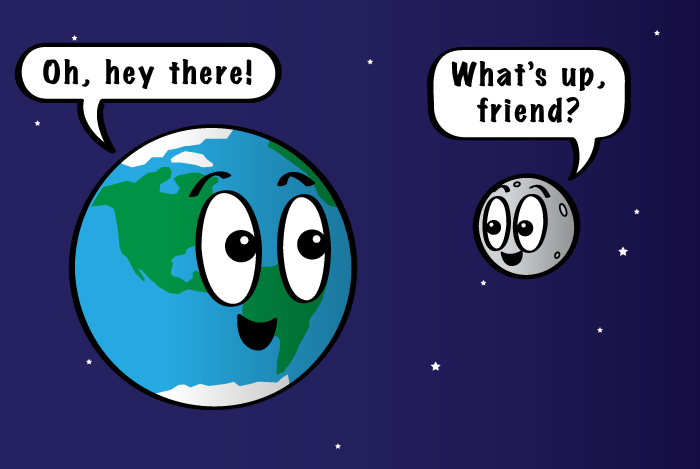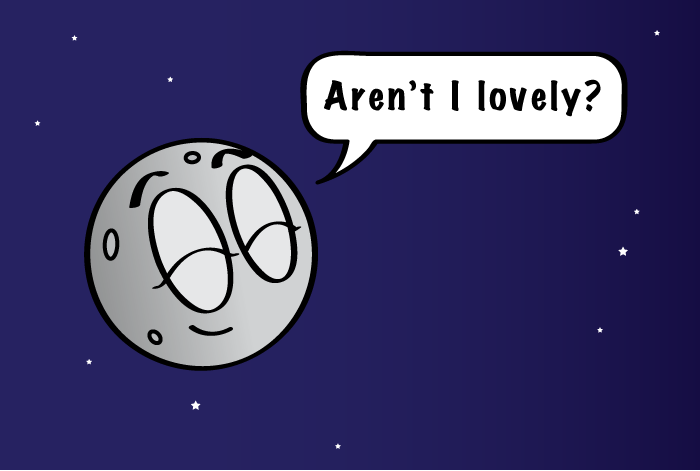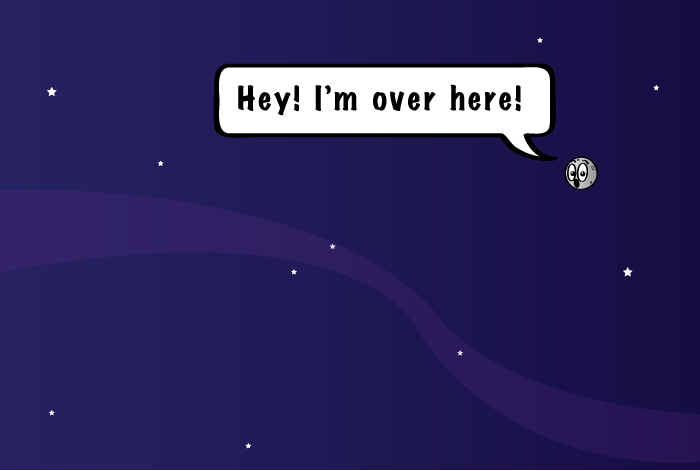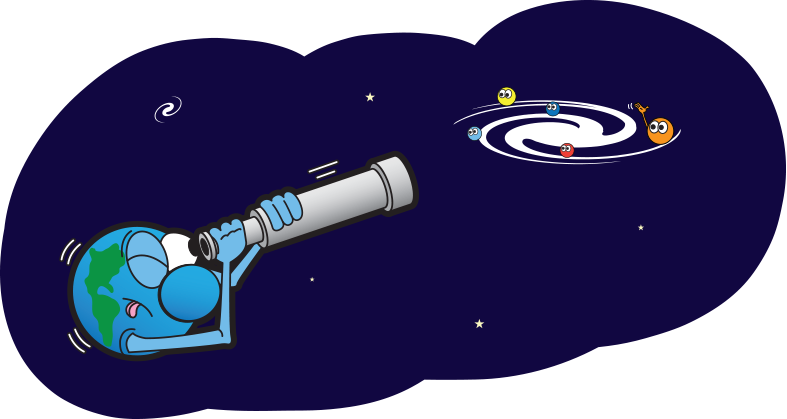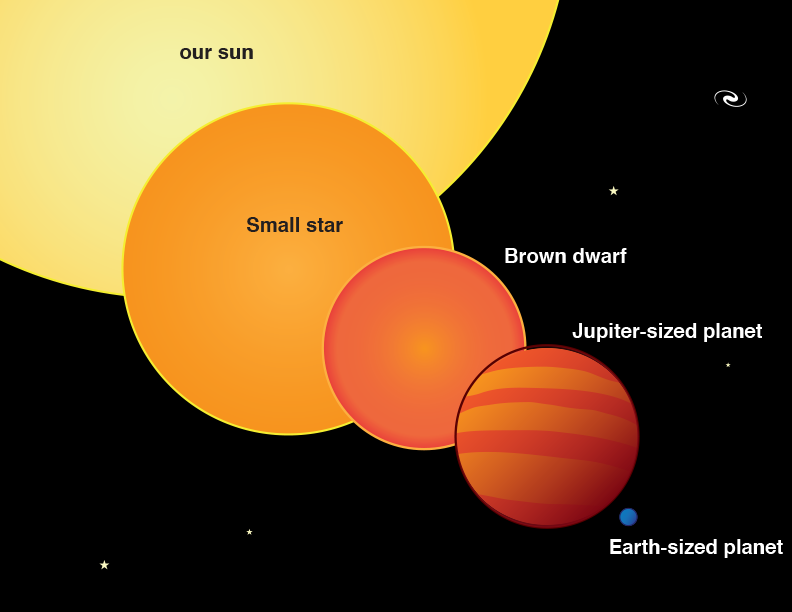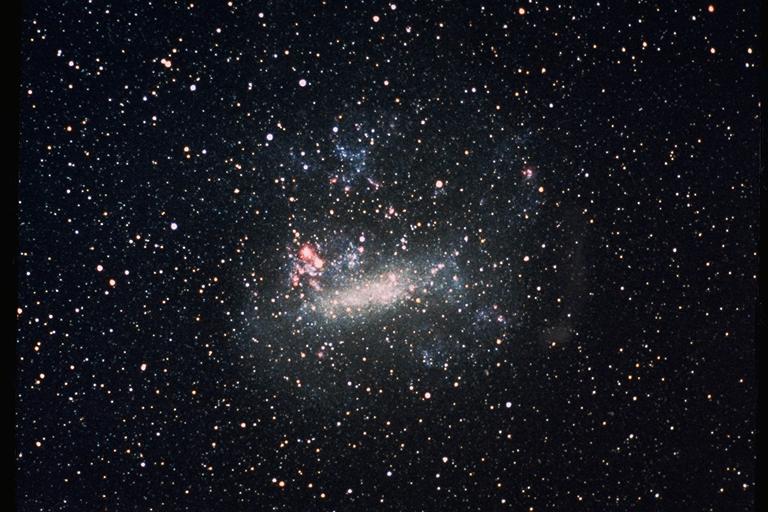 |
| wildebeests |
Thursday, December 31, 2015
Wildebeests
Wildebeests graze in Namibia and
breed there too and a whole wildebeests pack can eat up to 200,000 kg of grass
which weighs 12 blue whales so when all the grass in Namibia Serengeti park is
eaten the move to Kenya they cross many pastures which include many of the
wildebeests predators like hyenas lions and cheetahs they also cross lakes and
river full of hungry crocodiles for those who make it through all the death defying
obstacles their track ends at Kenya a grazing pasture where the wildebeests
graze for 2 months and breed there again and right after breeding they race all
the way back to Namibia Serengeti park and keeps going on like a life cycle
this migration is the most dangerous migration known to the animal kingdom July
through October
Tuesday, November 24, 2015
Fun facts on cats .....
|
Wednesday, August 19, 2015
Why does Saturn have rings?
Scientists have ideas about why Saturn has rings, but no one knows for sure.
What are Saturn's rings made of?
Are they solid? Or are they made of many particles dancing in formation around the planet? Four robotic spacecraft from Earth have visited Saturn—Pioneer 11, Voyager 1, Voyager 2, and Cassini. They have revealed many surprising things about Saturn's rings.
The small color differences in Saturn's rings have been enhanced in this picture from Voyager 2 data.
Over 60 bright and dark ringlets show up in this color enhanced image from Voyager 2 data.
The rings are about 400,000 kilometers (240,000 miles) wide. That's the distance from the Earth to the Moon! But the rings are as little as 100 meters (330 feet) thick. They range from particles too tiny to see to "particles" the size of a bus. Scientists think they are icy snowballs or ice covered rocks.
There are actually many rings—maybe 500 to 1000. There are also gaps in the rings. (That's why we put some black rings on our model Saturns.)
The Cassini spacecraft arrived at Saturn in July 2004 and is still there. It is studying Saturn, its rings, and its moons much more thoroughly than the earlier spacecraft could.
Cassini also carried a probe, called Huygens (HOY-guns), that parachuted into the atmosphere of Saturn's giant moon Titan. Huygens sent back amazing information and images from this strange world whose surface we have never seen.
Are they solid? Or are they made of many particles dancing in formation around the planet? Four robotic spacecraft from Earth have visited Saturn—Pioneer 11, Voyager 1, Voyager 2, and Cassini. They have revealed many surprising things about Saturn's rings.
The small color differences in Saturn's rings have been enhanced in this picture from Voyager 2 data.
Over 60 bright and dark ringlets show up in this color enhanced image from Voyager 2 data.
The rings are about 400,000 kilometers (240,000 miles) wide. That's the distance from the Earth to the Moon! But the rings are as little as 100 meters (330 feet) thick. They range from particles too tiny to see to "particles" the size of a bus. Scientists think they are icy snowballs or ice covered rocks.
There are actually many rings—maybe 500 to 1000. There are also gaps in the rings. (That's why we put some black rings on our model Saturns.)
The Cassini spacecraft arrived at Saturn in July 2004 and is still there. It is studying Saturn, its rings, and its moons much more thoroughly than the earlier spacecraft could.
Cassini also carried a probe, called Huygens (HOY-guns), that parachuted into the atmosphere of Saturn's giant moon Titan. Huygens sent back amazing information and images from this strange world whose surface we have never seen.
Monday, August 17, 2015
The Solar Cycle
The Solar Cycle
The Sun's core is made of dense, electrically charged gas called plasma. This roiling, boiling plasma generates the Sun's powerful magnetic field. Earth has a magnetic field too. Like Earth's magnetic field, the Sun's magnetic field has a north pole and asouth pole. However, unlike Earth, on the Sun the magnetic field is complicated—you might even say messy!About every 11 years, the Sun's magnetic field does a flip. In other words, the north pole becomes the south pole, and the south pole becomes the north pole.
The Sun also does something else every 11 years. Its storminess builds up to a maximum, then it settles back down to a minimum. This repeated behavior is called the solar cycle. When the Sun is the most stormy, that's when its magnetic field flips. Scientists are not sure what the storminess has to do with the magnetic field flipping, if anything.
Sunspots
Sunspots are areas of very strong magnetic forces on the Sun's surface. They look darker than their surroundings because they are cooler. Even so, when there are lots of sunspots, the Sun is actually putting out MORE energy than when there are fewer sunspots. During solar maximum, there are the most sunspots, and during solar minimum, the fewest.Solar Flares
Solar flares happen because of the constantly moving magnetic fields in the Sun's atmosphere. As the Sun approaches solar maximum (the most active part of its 11-year cycle), its magnetic fields become messier and messier. The magnetic fields loop around, and cross over each other, cutting each other off, and reconnecting.Have you ever tried sprinkling iron filings on a bar magnet? The iron filings line up along the magnetic lines of force. See the picture in the sidebar above.
Similarly, the hot plasma on the Sun's surface is at the mercy of the magnetic lines of force. Sometimes the plasma gets disconnected from the magnetic fields when the fields come together. Then particles in the hot plasma can speed up greatly and send powerful radiation into space. This is a solar flare.
When the solar cycle is at a minimum, active regions are small and rare and solar flares do not occur very often. They occur more often as the Sun gets near the maximum part of its cycle.
Coronal Mass Ejections
Sometimes, the Sun throws off huge amounts of matter. These events are called coronal mass ejections, or CMEs. A CME can release up to 20 billion tons of this material! If that material were rock, it would make a mountain roughly 2-3/4 miles across and almost 1/2 mile high!Fast CMEs occur more often near the peak of the 11-year solar cycle. CMEs can trigger major upsets in Earth's magnetosphere. The Sun can eject matter in any direction, and very few of the CMEs will actually run into Earth.
Thursday, August 13, 2015
Solar System Facts
- The solar system includes the sun and all the objects that orbit around it due to its gravity. This includes things such as planets, comets, asteroids and meteoroids
- The Solar System formed around 4.6 billion years ago.
- There are eight planets in the Solar System. The four inner planets are mercury, venus, earth and mars while the four outer planets are Jupiter, saturn, uranus and neptune.
- The inner planets (also known as terrestrial planets) are smaller and made mostly of rock and metal.
- The outer planets (also known as gas giants) are much larger and made mostly of hydrogen, helium and other gases.
- As of 2008, there are also five dwarf planets: pluto, Ceres, Eris, Makemake & Haumea.
- There is an asteroid belt which lies between the orbits or Mars and Jupiter, it features a large number of irregular shaped asteroids.
- For thousands of years humans were unaware of the Solar System and believed that Earth was at the center of the Universe.
- Astronomers such as Nicolaus Copernicus, Galileo Galilei, Johannes Kepler and Isaac Nelson helped develop a new model that explained the movement of the planets with the Sun at the center of the Solar System.
- The Sun contains 99.86 percent of the Solar System's known mass, with Jupiter and Saturn making up making up most of the rest. The small inner planets which include Mercury, Venus, Earth and Mars make up a very small percentage of the Solar System’s mass.
Sunday, August 9, 2015
Facts about the human teeth
- Teeth are used to help break down food.
- Humans form 2 sets of teeth over the course of their lives.
- The first set (sometimes called baby teeth) features 20 teeth.
- The second set (sometimes called adult teeth) features 32 teeth.
- Baby teeth are usually replaced by adult teeth between the ages of 6 and 12.
- Humans have a variety of teeth including molars, premolars, canines and incisors.
- Incisors help bite pieces from food.
- Canines help hold and tear food apart.
- Molars help grind food.
- Teeth are covered in a hard substance called enamel.
- Teeth are surrounded by gums.
- Cavities can damage a tooth if left untreated.
- Braces are often used to help straighten or align teeth.
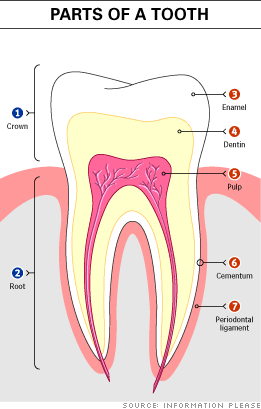
Wednesday, August 5, 2015
what is it like inside Jupiter ?
If you have ever spent any time at the bottom of the deep end of a pool, you probably noticed that everything around you seemed heavier. Your ears might have hurt a bit and you might have felt your goggles press harder against your face. This is because the deeper you go, the more water there is on top of you. All that water presses against you and you experience more pressure.
If you notice this effect in a relatively shallow swimming pool, imagine how much pressure you would feel at the bottom of the deepest part of the ocean. At the bottom of the Pacific Ocean, you would feel as if there were over 16,000 pounds of force pressing on every square inch of your body! That’s like having the weight of three cars pressing against every square inch of your body. Obviously no human could survive under such conditions—that’s why we’ve had to build incredibly strong submarines to go that deep.
But that kind of pressure is nothing compared to what would be found at the center of the Earth. Think of everything that would be on top of you—oceans, mountains, millions of tons of molten material, an iron core... In theory, you would experience about 53 million pounds (or around 10,000 cars) of pressure on every square inch of your body at that depth.
But as powerful as that may sound, the pressure at the center of Earth is child’s play compared to the pressure at the center of Jupiter. How much weight would each square inch of your body experience there? Potentially over 650 million pounds! That’s nearly 130,000 cars! If you were to stack up all those cars they would rise up 117 miles above Earth—and if you can imagine it, there would be one stack like that for each square inch of your body!
What Happens Under That Much Pressure?
It turns out some pretty crazy things happen under that kind of immense pressure. Jupiter is made up almost entirely of hydrogen. When you think of hydrogen, you probably think of a common, colorless, odorless gas. But under the millions of pounds of pressure found inside Jupiter, the hydrogen gas is compressed so much that it actually changes into a liquid! Even deeper, the pressure is so great that the liquid hydrogen acts like a metal. Scientists call it liquid metallic hydrogen.
At least we are pretty sure that’s what is going on inside Jupiter. The conditions on Jupiter are so extreme that they can’t really be recreated here on Earth. Scientists have been trying for years to create liquid metallic hydrogen. But it is nearly impossible to mimic the interior of Jupiter on Earth for more than a couple millionths of a second.
The Largest Ocean in the Solar System
Despite how hard it is to create these conditions here on Earth, Jupiter is so extremely massive that it probably has an entire ocean of liquid metallic hydrogen deep underneath its cloudy exterior. Incredibly, if scientists are right, it would be the largest ocean in our solar system.
An entire ocean of something we can barely produce here on Earth! Turns out pretty crazy things happen when something is surrounded by the weight of 130,000 cars in every direction!
Wednesday, July 29, 2015
fun whale facts
- There are 79 to 84 different species of whale. They came in many different shapes and sizes!
- A baby whale is called a calf. Whales form groups to look after calves and feed together. These groups are often made up of all female or all male whales.
- Whales that are found in both Northern and Southern hemisphere never meet or breed together. Their migration is timed so that they are never in breeding areas at the same time.
- The arched lower lip of a whale can often make it look like it is smiling! However, this isn’t a “real” smile as the blubber in the head of the whale prevents the muscles of the face from reaching the surface.
- You can tell the age of a whale by looking at the wax plug in its ear. This plug in the ear has a pattern of layers when cut lengthwise that scientists can count to estimate the age of the whale.
- Whales love to sing! They use this as a call to mates, a way to communicate and also just for fun! After a period of time they get bored of the same whale song and begin to sing a different tune.
- Sometimes whales make navigation mistakes during migrations. Although they may have made the mistake days before, they don’t realise it until they becoming stranded.
- Whales support many different types of life. Several creatures, such as barnacles and sea lice, attach themselves to the skin of whales and live there.
fun dog facts
- In total there is said to be around 400 million dogs in the world.
- The domestic dog has been one of the most popular working and companion animals throughout human history.
- Dogs perform many useful tasks for humans including hunting, farm work and security as well as assisting those with disabilities such as the blind.
- Although experts often disagree, there is scientific evidence which shows that the domestication of dogs could have occurred more than 15,000 years ago.
- There are hundreds of different breeds of dogs.
- The most popular breed of dog in the world by registered ownership is the Labrador. With their gentle nature, obedience, intelligence and near limitless energy, Labradors make for excellent family pets and reliable workers. They often assist police and are a common choice as guide dogs.
- Dogs have formed such a strong bond as pets, workers and companions to humans that they have earned the nickname "man's best friend".
- Humans help train various dog breeds to enter in competitions such as breed shows, agility and obedience contests, racing and sled pulling.
- Dog have superior hearing than humans, capable of hearing sounds at four times the distance.
- Dogs have a remarkable sense of smell, they are capable of differentiating odors in concentrations nearly 100 million times lower than humans can.
- The average life span for a dog is around 10 to 14 years.
- Those involved in dog breeding refer to males as ‘dogs’, females as ‘bitches’, dogs younger than a year old as ‘puppies’ and a group of offspring as a ‘litter’.
- Domestic dogs are omnivores, they feed on a variety of foods including grains, vegetables and meats
what is a Satellite galaxy
What Is a Satellite Galaxy?
Our sun is part of a massive collection of stars in the Milky Way galaxy. These hundreds of billions of stars orbit the galaxy’s center. But did you know that there are things that are even bigger orbiting the Milky Way’s center? Other galaxies orbit it too!
These less massive galaxies have their own impressive collection of stars, which all orbit their own center; but the galaxies and everything in them orbit our galaxy too. It’s as if our galaxy is the sun and those other galaxies are planets. Astronomers call them “satellite galaxies.”
Where Are They and What Are They Like?
In terms of distance, there are two contenders for closest satellite galaxy. One group of stars is small enough that astronomers consider it a “dwarf galaxy.” The other group is so close that they still debate weather or not it is part of our galaxy or its own dwarf galaxy.The Milky Way has a number of satellite galaxies, but the biggest one is the Large Magellanic Cloud. It is about 163,000 light-years away and around 1/100th the size of the Milky Way. Unlike our spiral galaxy, this one lacks a clean spiral shape. Some scientists think that is because the Milky Way and other galaxies are pulling and warping it.
Astronomers have named the one that everyone agrees on the Sagittarius Dwarf Spheroidal Galaxy. It’s about 50,000 light-years away from the Milky Way center. It orbits over the top and down below the disk of our galaxy, like a ring over a spinning top.
But there is something even closer to our Milky Way—a cluster of stars named by some to be the Canis Major Dwarf Galaxy. Scientists estimate that it contains around a billion stars. It is so close to the edge of the Milky Way that it is closer to our solar system than to our galaxy’s center. It’s about 25,000 light-years away from us.
Where Does One Galaxy Start and the Other End?
Some scientists don’t think the Canis Major cluster of stars is actually its own galaxy or dwarf galaxy. Instead they think it is just a dense area of faraway stars that are still part of the Milky Way. Either way, it is clear that this bunch of stars has been pulled very close to our Milky Way by our galaxy’s massive gravity. Over time, this could be the fate of other satellite galaxies in the area. They could all one day merge into an even larger Milky Way galaxy!
Tuesday, July 28, 2015
sun facts
Sun Facts for Kids
Enjoy these fun Sun facts for kids. Learn how hot the Sun is, how long it takes light from the Sun to reach Earth, what the Sun is made of and more.
Read on for a range of interesting facts about the Sun.
The Sun is a star found at the center of the Solar System.
It makes up around 99.86% of the Solar System’s mass.
At around 1,392,000 kilometres (865,000 miles) wide, the Sun’s diameter is about 110 times wider than Earth’s.
Around 74% of the Sun’s mass is made up of hydrogen. Helium makes up around 24% while heavier elements such as oxygen, carbon, iron and neon make up the remaining percentage.
Light from the Sun reaches Earth in around 8 minutes.
The Sun’s surface temperature is around 5500 degrees Celsius (9941 degrees Fahrenheit), so pack plenty of sunscreen if you plan on visiting (remembering that the average distance from the Sun to the Earth is around 150 million kilometers).
The Sun’s core is around 13600000 degrees Celsius!
The Sun generates huge amounts of energy by combining hydrogen nuclei into helium. This process is called nuclear fusion.
Because of the Sun’s huge influence on Earth, many early cultures saw the Sun as a deity or god. For example, Ancient Egyptians had a sun god called Ra while in Aztec mythology there is a sun god named Tonatiuh.
The Sun produces a solar wind which contains charged particles such as electrons and protons. They escape the Sun’s intense gravity because of their high kinetic energy and the high temperature of the Sun’s corona (a type of plasma atmosphere that extends into space).
Planets with strong magnetic fields such as Earth manage to deflect most of these charged particles as they approach.
A solar eclipse occurs when the Moon is between the Sun and the Earth.
Enjoy these fun Sun facts for kids. Learn how hot the Sun is, how long it takes light from the Sun to reach Earth, what the Sun is made of and more.
Read on for a range of interesting facts about the Sun.
The Sun is a star found at the center of the Solar System.
It makes up around 99.86% of the Solar System’s mass.
At around 1,392,000 kilometres (865,000 miles) wide, the Sun’s diameter is about 110 times wider than Earth’s.
Around 74% of the Sun’s mass is made up of hydrogen. Helium makes up around 24% while heavier elements such as oxygen, carbon, iron and neon make up the remaining percentage.
Light from the Sun reaches Earth in around 8 minutes.
The Sun’s surface temperature is around 5500 degrees Celsius (9941 degrees Fahrenheit), so pack plenty of sunscreen if you plan on visiting (remembering that the average distance from the Sun to the Earth is around 150 million kilometers).
The Sun’s core is around 13600000 degrees Celsius!
The Sun generates huge amounts of energy by combining hydrogen nuclei into helium. This process is called nuclear fusion.
Because of the Sun’s huge influence on Earth, many early cultures saw the Sun as a deity or god. For example, Ancient Egyptians had a sun god called Ra while in Aztec mythology there is a sun god named Tonatiuh.
The Sun produces a solar wind which contains charged particles such as electrons and protons. They escape the Sun’s intense gravity because of their high kinetic energy and the high temperature of the Sun’s corona (a type of plasma atmosphere that extends into space).
Planets with strong magnetic fields such as Earth manage to deflect most of these charged particles as they approach.
A solar eclipse occurs when the Moon is between the Sun and the Earth.
Tuesday, July 21, 2015
why is the sky blue?
The
sky is blue because the white light produced by the sun separates when it hits
the atmosphere into many colors but some are wavy and lazy while others are
short blue is short and that is why we mostly see blue. Light directly from the
sun looks red because in the center of the sun ray the blue scatters and the
red waves are lazy so it goes in a straight line.
Monday, July 20, 2015
what is a volcano
A volcano is an opening on the surface of a planet or moon that allows material warmer than its surroundings to escape from its interior. When this material escapes, it causes an eruption. An eruption can be explosive, sending material high into the sky. Or it can be calmer, with gentle flows of material.
These volcanic areas usually form mountains built from the many layers of rock, ash or other material that collect around them. Volcanoes can be active, dormant, or extinct. Active volcanoes are volcanoes that have had recent eruptions or are expected to have eruptions in the near future. Dormant volcanoes no longer produce eruptions, but might again sometime in the future. Extinct volcanoes will likely never erupt again.
What Causes Volcanoes?
Volcanoes occur when material significantly warmer than its surroundings is erupted onto the surface of a planet or moon from its interior. On Earth, the erupted material can be liquid rock ("lava" when it's on the surface, "magma" when it's underground), ash, cinders, and/or gas. There are three reasons why magma might rise and cause eruptions onto Earth’s surface.
Magma can rise when pieces of Earth's crust called tectonic plates slowly move away from each other. The magma rises up to fill in the space. When this happens underwater volcanoes can form. Magma also rises when these tectonic plates move toward each other. When this happens, part of Earth's crust can be forced deep into its interior. The high heat and pressure cause the crust to melt and rise as magma. A final way that magma rises is over hot spots. Hot spots are exactly what they sound like--hot areas inside of Earth. These areas heat up magma. The magma becomes less dense. When it is less dense it rises. Each of the reasons for rising magma are a bit different, but each can form volcanoes.
Are There Volcanoes Elsewhere In Our Solar System?
Yes! There have been a lot of volcanoes on other planets in the past. Some places in our solar system have active volcanoes erupting right now! Venus and Mars are covered with extinct volcanoes. Some of the moons of Jupiter, Saturn, and Neptune actually have eruptions happening right now. We have taken pictures of these with many different NASA spacecraft!
how far away is the moon from earth
You might be surprised.
Often when we see drawings of the Earth and the moon, they look really close together.
Don’t be fooled! They’re actually really far apart. The moon is an average of 238,855 miles (384,400 km) away. How far away is that? That’s 30 Earths.
Average distance?
Why mention the average distance? Well, the moon is not always the same distance away from Earth. The orbit is not a perfect circle.
When the moon is the farthest away, it’s 252,088 miles away.That’s almost 32 Earths. When it's closest, the moon is 225,623 miles away. That’s between 28 and 29 Earths.
When the moon is the farthest away, it’s 252,088 miles away.That’s almost 32 Earths. When it's closest, the moon is 225,623 miles away. That’s between 28 and 29 Earths.
So far apart!
The moon definitely seems close because we can see it so well without a telescope,
but remember, it’s farther away than most people realize!
The planets in the solar system
What are planets ?
The planets in our solar system didn’t appear out of nowhere. Neither did the sun. They were all part of a big cloud of gas and dust. Gravity collected lots of material in the center to create the sun. The left over stuff swirled around the forming sun, colliding and collecting together. Some would have enough gravity to attract even more gas and dust, eventually forming planets.Scientists spent a lot of time arguing over what a planet actually is. In 2006, they came up with a definition. They said a planet must do three things. The first thing might seem obvious—it has to orbit around the sun. Second, it must be big enough to have enough gravity to force it into a spherical shape . And third, it must be big enough that its gravity cleared away any other objects of a similar size near its orbit around the Sun.
What about planets in other places?
This definition is very much focused on our own solar system. But there are also planets in places that are not our solar system. These planets are called exoplanets. They can be found circling around stars, just like the planets here in our own solar system. Does that mean that all planets form the same way? Are all planets made from a star’s leftovers?
That depends on who you talk to. What happens if a small cloud of gas floating out in the middle of nowhere forms a sphere because its gravity? Is that a planet, too? After all, Jupiter is a big sphere of gas. And both are just a mass of stuff that wasn’t quite big enough to form a bright, fiery star.
Big planet or tiny star?
Clouds of gas that don’t have enough material to form a bright star collect into spheres all the time. Most of the time these clouds form a type of star called a brown dwarf. They are pretty big compared to most planets, but they are not big enough to turn into the kind of star that makes lots of energy and gives off light.
But scientists recently discovered an even smaller gassy object in the middle of nowhere (read more about it here). It appears redder than most brown dwarfs, and is likely much younger than most, too. This object could have formed just like a brown dwarf—from a small cloud of gas. Or maybe it was created around a star and it somehow got flung off into space.
Some scientists are calling this object a planet. Others think that it can only be a planet if it formed around a star. They think that if it just formed from a cloud of gas, then it’s nothing more than a not-quite-star.
Science is full of arguments like this. That’s what makes it so interesting. What do you think? Do all planets, even exoplanets, need to form around stars?
Monday, July 13, 2015
facts about the human body
- Red blood cells carry oxygen around the body. They are created inside the bone marrow of your bones. More blood facts.
- The colour of a humans skin is determined by the level of pigment melanin that the body produces. Those with small amounts of melanin have light skin while those with large amounts have dark skin. More skin facts.
- Adult lungs have a surface area of around 70 square metres! More lung facts.
- Humans have a stage of sleep that features rapid eye movement (REM). REM sleep makes up around 25% of total sleep time and is often when you have your most vivid dreams. More eye facts.
- Most adults have 32 teeth. More teeth facts.
- The smallest bone found in the human body is located in the middle ear. The staples (or stirrup) bone is only 2.8 millimetres long. More ear facts.
- Your nose and ears continue growing throughout your entire life. More nose facts.
- Infants blink only once or twice a minute while adults average around 10.
- As well as having unique fingerprints, humans also have unique tongue prints.
- The left side of your body is controlled by the right side of your brain while the right side of your body is controlled by the left side of your brain.
- Antibiotics are only effective against bacteria, they won't help in fighting off a virus.
- It takes the body around 12 hours to completely digest eaten food.
- Your sense of smell is around 10000 times more sensitive than your sense of taste. More senses facts.
Sunday, July 12, 2015
the galaxy
What Is a Satellite Galaxy?
Our sun is part of a massive collection of stars in the Milky Way galaxy. These hundreds of billions of stars orbit the galaxy’s center. But did you know that there are things that are even bigger orbiting the Milky Way’s center? Other galaxies orbit it too!
These less massive galaxies have their own impressive collection of stars, which all orbit their own center; but the galaxies and everything in them orbit our galaxy too. It’s as if our galaxy is the sun and those other galaxies are planets. Astronomers call them “satellite galaxies.”
Where Are They and What Are They Like?
The Milky Way has a number of satellite galaxies, but the biggest one is the Large Magellanic Cloud. It is about 163,000 light-years away and around 1/100th the size of the Milky Way. Unlike our spiral galaxy, this one lacks a clean spiral shape. Some scientists think that is because the Milky Way and other galaxies are pulling and warping it.
In terms of distance, there are two contenders for closest satellite galaxy. One group of stars is small enough that astronomers consider it a “dwarf galaxy.” The other group is so close that they still debate weather or not it is part of our galaxy or its own dwarf galaxy.
Astronomers have named the one that everyone agrees on the Sagittarius Dwarf Spheroidal Galaxy. It’s about 50,000 light-years away from the Milky Way center. It orbits over the top and down below the disk of our galaxy, like a ring over a spinning top.
But there is something even closer to our Milky Way—a cluster of stars named by some to be the Canis Major Dwarf Galaxy. Scientists estimate that it contains around a billion stars. It is so close to the edge of the Milky Way that it is closer to our solar system than to our galaxy’s center. It’s about 25,000 light-years away from us.
Where Does One Galaxy Start and the Other End?
Some scientists don’t think the Canis Major cluster of stars is actually its own galaxy or dwarf galaxy. Instead they think it is just a dense area of faraway stars that are still part of the Milky Way. Either way, it is clear that this bunch of stars has been pulled very close to our Milky Way by our galaxy’s massive gravity. Over time, this could be the fate of other satellite galaxies in the area. They could all one day merge into an even larger Milky Way galaxy!
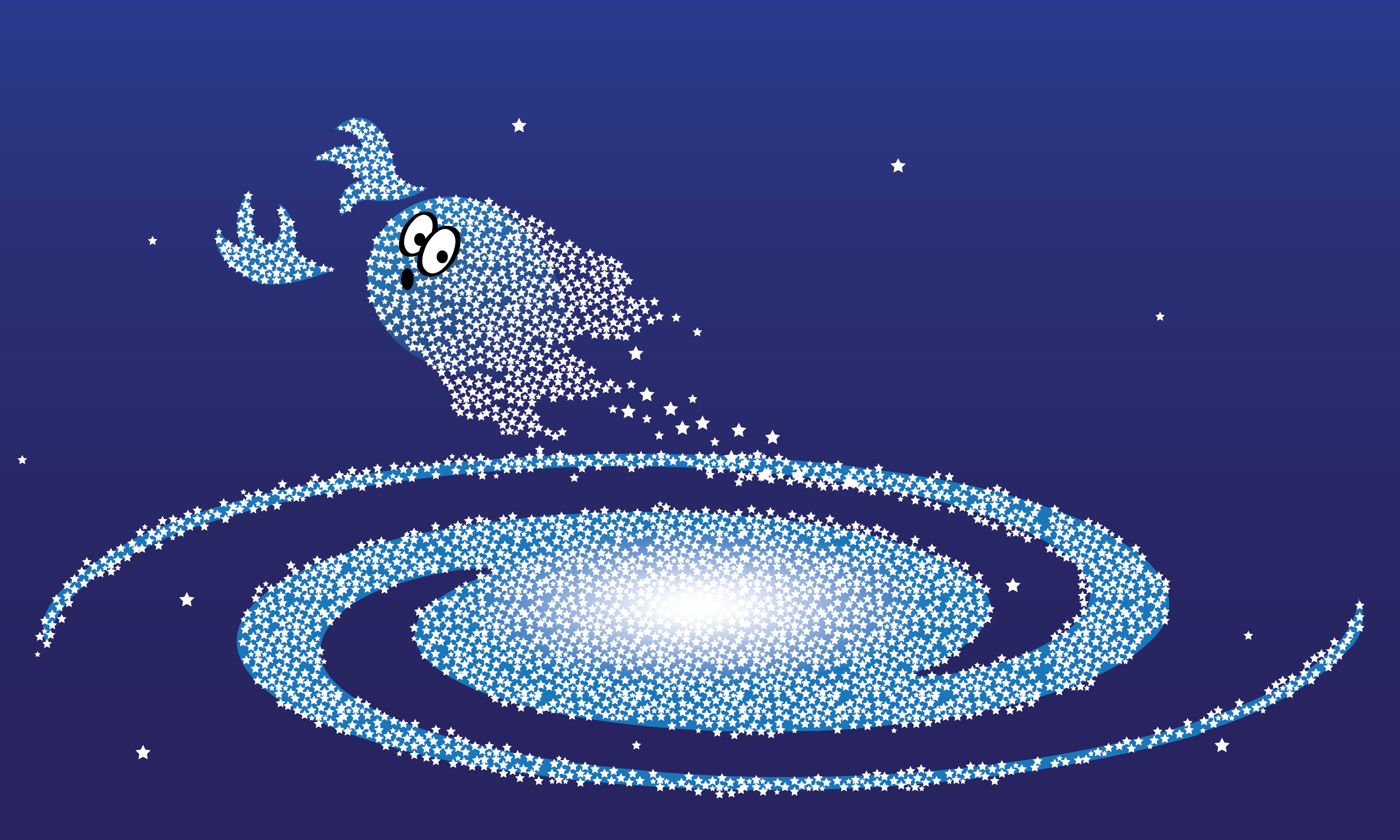
Subscribe to:
Posts (Atom)










